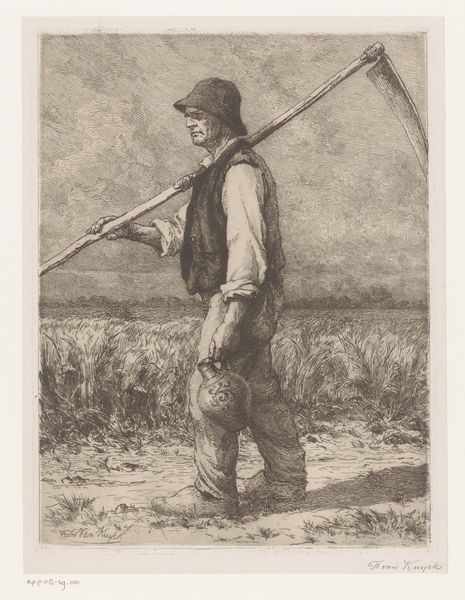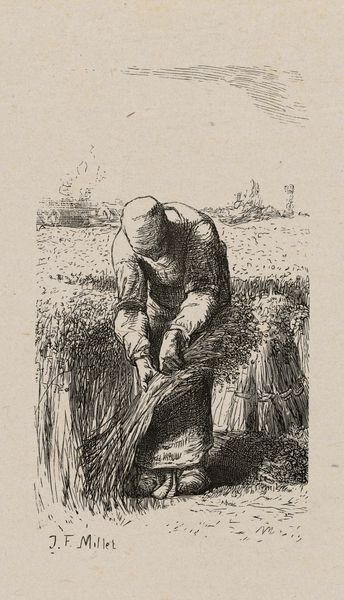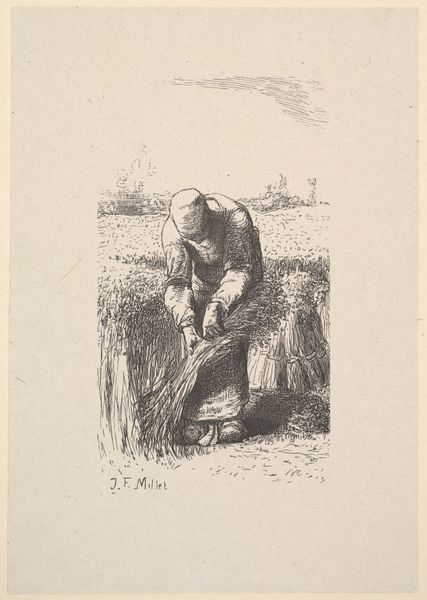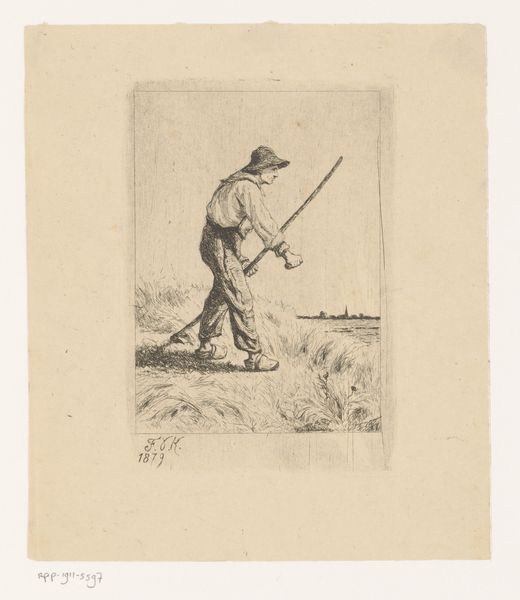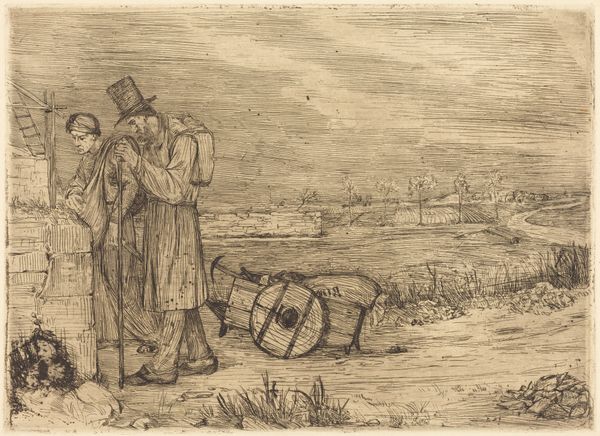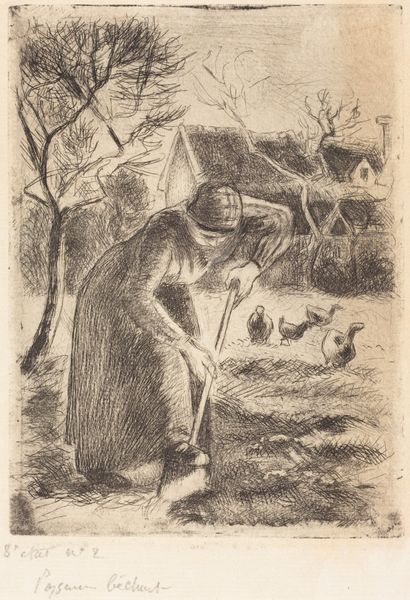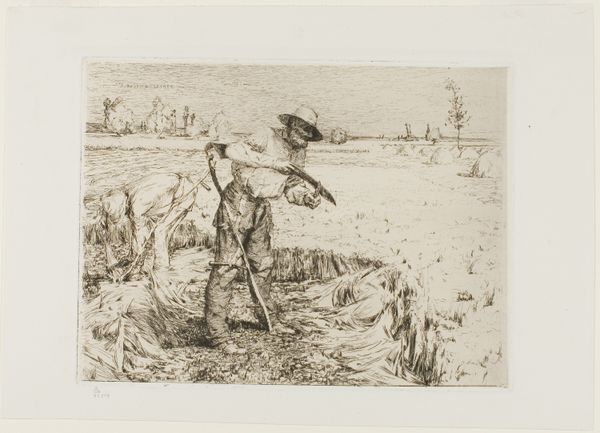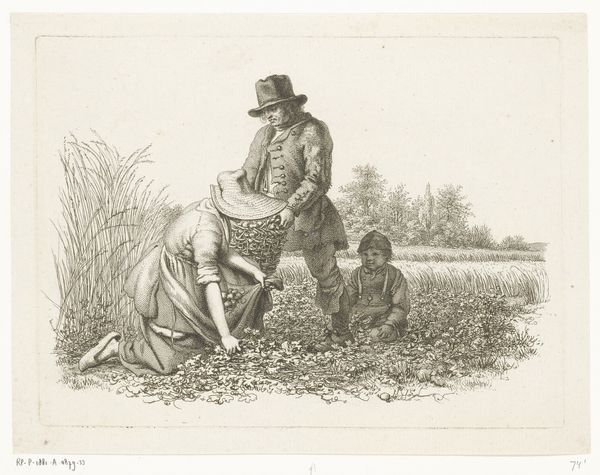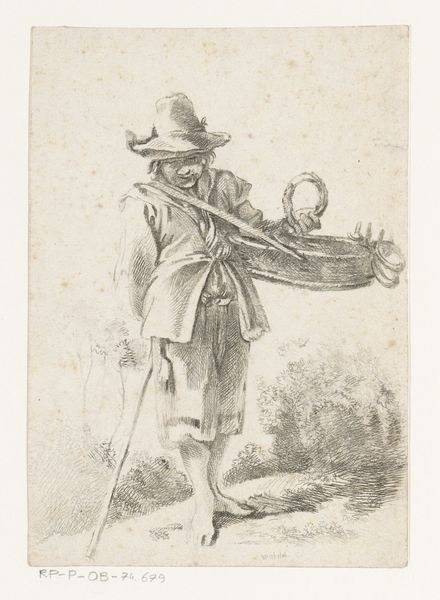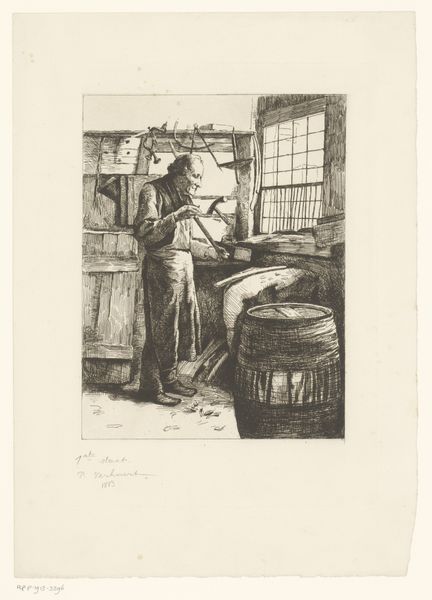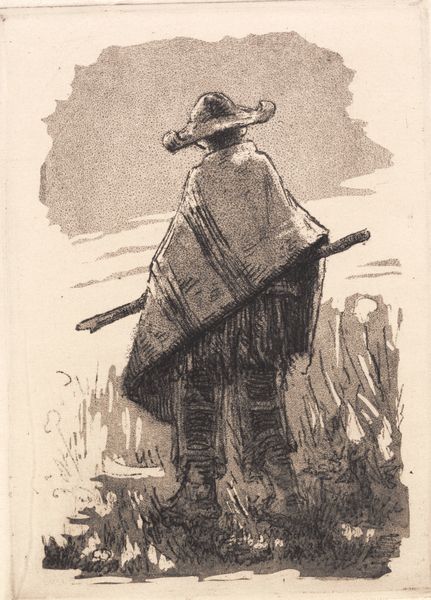
print, etching
# print
#
etching
#
landscape
#
charcoal drawing
#
genre-painting
#
realism
Dimensions: height 200 mm, width 140 mm
Copyright: Rijks Museum: Open Domain
Curator: Look at this etching, "Man Bint korenschoof op akker met koren," created by Johanna Henriëtte Besier sometime between 1875 and 1887. What are your initial thoughts? Editor: Wow, that’s got a very muted, almost mournful quality. It’s the kind of scene that makes you feel the weight of labor, you know? A lone figure, surrounded by all this…brown. Makes you think about struggle. Curator: Absolutely. The piece offers insight into gender and labor during the late 19th century. The artist, a woman herself, invites us to consider the realities of agricultural workers through a realist lens. It raises questions about representation, class, and the individual's relationship to the land. Editor: I can dig that! And technique-wise, I'm fascinated by the lines! They're so delicate, almost hesitant, yet they create this incredible texture, especially in the field of wheat. I bet you feel you could pick that thing up right now if you stuck your hand inside this… what’s the term again, glass box, haha. It kinda captures the earthiness of labor in a beautifully subtle way, wouldn’t you say? Curator: Indeed, Besier’s etching skillfully employs line and texture. This aesthetic is indicative of Realism's broader investment in representing the lives of everyday people without romanticism or idealization, an ideal of that era also. It allows for discussion regarding the lack of access that women at that time, but also today, had to resources in some regions, leading them to endure physically tasking work in the fields. Editor: Totally! There's a kind of unspoken solidarity there, I feel. It almost makes me want to grab a hoe and, you know, "get earthy," haha. Curator: That’s one powerful reading, because her artwork also shows respect to this form of physical labor by capturing the ordinary dignity of her subjects and not judging them, inviting more solidarity like you just mentioned, by sharing the lives of everyday people. Editor: Right on. I dig this more every minute we talk about it! It's like peeling an onion or a radish...in art? Does that even make sense? Curator: It makes perfect sense to me! It only reflects the layers of interpretation and critical questions that it raises in you as you consider its themes of labor, representation, gender, and realism. It is not simply a beautiful image, but also an opportunity to re-evaluate. Editor: Yes, exactly! So I leave here thinking, as always, that there is beauty in all stories! Even when they touch struggle.
Comments
No comments
Be the first to comment and join the conversation on the ultimate creative platform.
